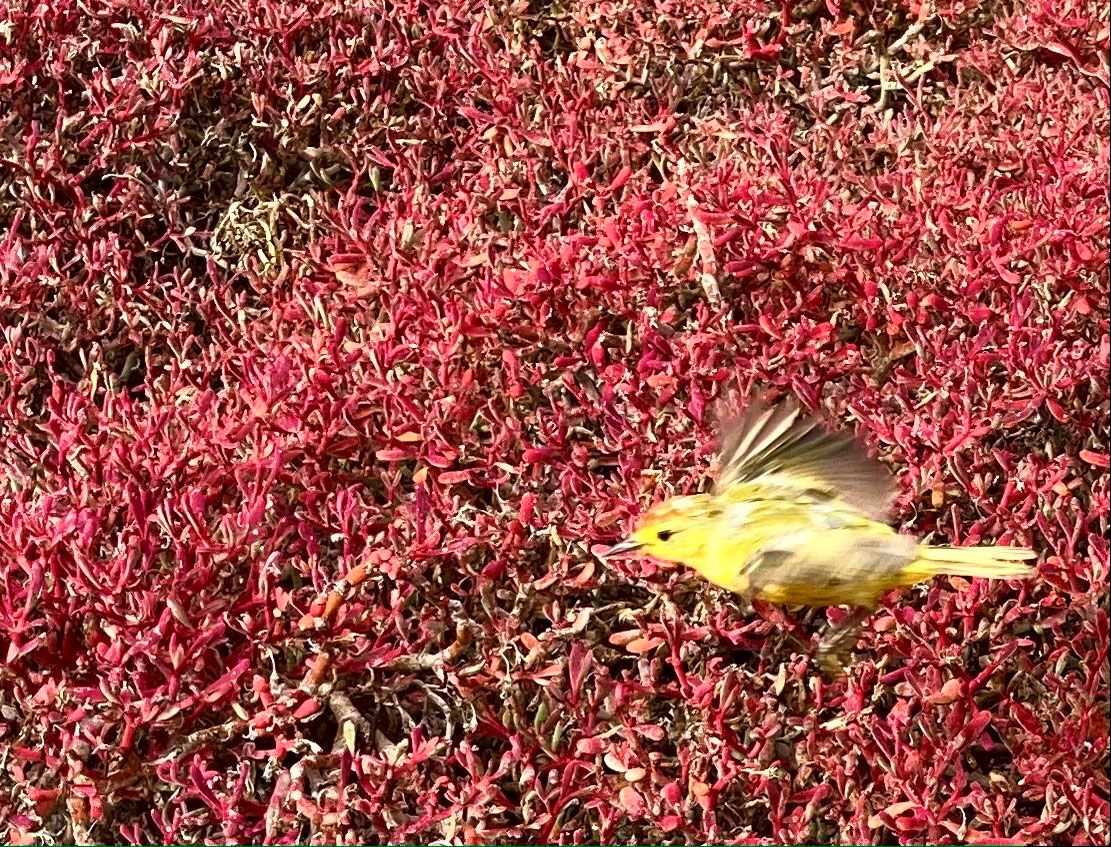This morning, National Geographic Islander guests visited South Plaza Island. The coloration of Sesuvium sp is perfect against the deep blue of the ocean. The rocky trail–home to swallowed-tailed gulls, lava lizards, and marine iguanas–led us to the rocky shore. We found a big colony of Galapagos sea lions playing along the coast.
In the afternoon, Santa Fe Island offered us the chance to observe unique species like the Santa Fe land iguana, which is quite different from the Galapagos land iguana. Santa Fe land iguanas are not only bigger in size, but much more of a pale yellow in coloration. A boulder trail, surrounded by a dense forest of treelike cactus called Opuntia, ended at a white sand beach crowded with a colony of sea lions resting at sunset.







